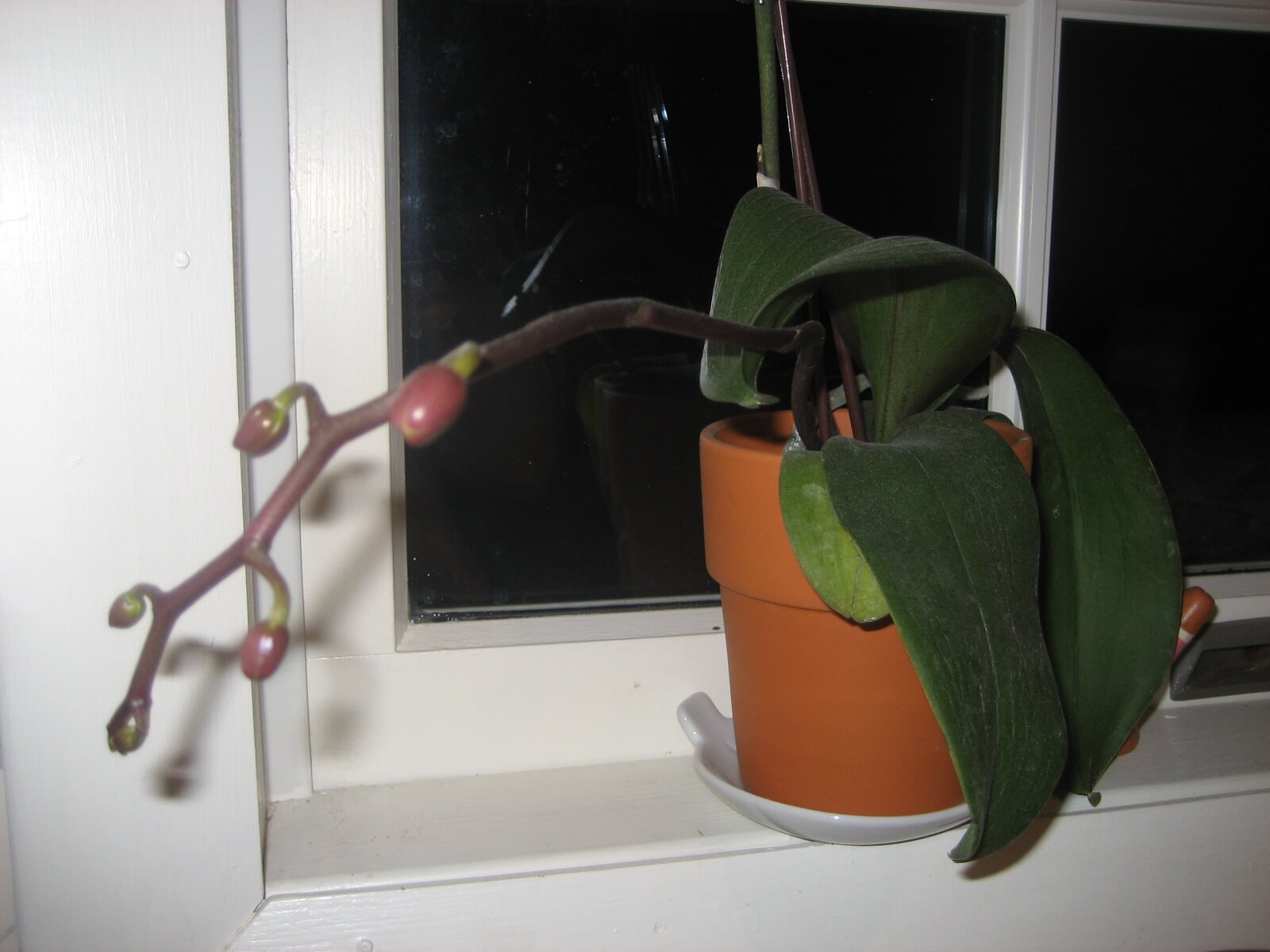
Somehow, I have failed to kill the orchid.
The orchid in question is the first I’ve ever owned. It was bestowed upon me this past July as a hostess gift from a visiting friend. This friend — unlike me — does not have to drive an hour in order to reach the nearest Trader Joe’s, so she arrived at our house thoughtfully bearing an array of exotic Trader Joe’s products: dried mango, chocolate-covered cherries, seasoning salt. Also: the orchid.
“It’s beautiful. Thank you,” I said as she handed me a tiny pot containing the single curved stalk upon which three delicate blossoms trembled. “I’m going to kill this.”
“That’s okay,” she shrugged. “Enjoy it before it dies.”
My only previous experience with orchids occurred immediately after I graduated from college. I taught by day at a private girls’ school in Greenwich, Connecticut, and attended graduate school by night. This schedule left me little free time or money, so I was grateful when a family with three daughters at the school where I taught invited me to live, rent-free, in their mansion.
I say “mansion” because the only other possible word to describe this residence would be “compound”. It had a pool, complete with a pool house where one of the maids lived. It had a tennis court, and a guest house (which sat empty unless there were overnight guests). The main house was so large that, in the eighteen months I lived there, I don’t think I saw all the rooms. My own quarters were in a wing above the gym, with stairs leading down to the kitchen.
The orchids were in the kitchen: a counter full of orchids. It would not be unfair to say that these orchids received more attention than the family’s daughters. Various members of the household staff moved them reverently around the kitchen, plucked off their dead foliage, and spritzed them with brass plant misters.
Those were the images that flashed through my mind when my friend handed me the orchid. It was more frightening than the moment when I held my own baby for the very first time; then, I just felt overwhelmed, but in this case I felt the certainty of defeat. You are a doomed plant, I whispered to those trembling blossoms.
I have no household staff. Or rather, I am the household staff, and I already have my hands full trying to sustain the lives of four daughters, one husband, one dog, and a few hardy houseplants that I’ve been assured are “impossible to kill.” (I live in fear that I will one day suffer the humiliation of killing the aloe plant, which resides in the guest room, ignored, for months at a time.)
Nevertheless, I read the orchid’s care instructions. For about a month, I dutifully tried to water my orchid at regular intervals. But school started. Then it was Halloween, and a daughter’s birthday, and Thanksgiving. My husband turned forty, and five days later it was Christmas.
After we rang in 2015, I caught my breath and remembered the orchid. For nearly two months I had treated my orchid the same way I treat my aloe plant: I had ignored it completely. I walked over to the kitchen window, slowly and with trepidation, ready to pronounce death.
To my complete shock, I found that my orchid was not only alive, but had sprouted a whole new branch. And on that branch, there were – get this – five brand new buds! My orchid hadn’t just survived my negligence, it had thrived!
Lest you doubt that this was a miracle, I present you with the entry for orchid care from my gardening book:
“Orchids are commonly perceived as delicate and demanding. But thanks to modern cultural techniques, home gardeners can grow these exotic beauties with only moderate effort. Most orchids require a warm environment (60°-80° F), high humidity, 12 to 14 hours of light daily, protection from direct summer sun, and good air circulation. For the best blooms and growth, apply a special orchid fertilizer once every 2 to 3 weeks. Provide good air circulation. . . . If you can’t open a window, use a small oscillating fan, directing it away from the plants. Orchids love humidity. Set them atop a tray of damp pebbles, keeping the base of the pots out of the water. You can also mist them lightly each morning. Water in the morning whenever the potting fiber looks dry – but never make it soggy. While you can water once a week most of the year, you may need to do it daily in the summer. Use 60°- 70° F water.”
I’m not sure who wrote that, but I’d bet it was a childless, pet-less, single retiree living in a rainforest. Special orchid fertilizer? Oscillating fan? Tray of damp pebbles? In whose world is that considered “only moderate effort”?
There are many things in life that I’m tempted to treat like orchids – the way the gardening book says you’re supposed to treat orchids: things that I want to worry about, fuss over, follow every care instruction to the letter as a totem against failure. Included in this category are my relationships, my health, my “career”, my spiritual life, and my children. In other words, I treat almost everything like an orchid . . . except my orchid.
I turn my head and it’s there on the kitchen windowsill, buds preparing to open. Still alive (for now — but I’ve started watering it again, so who knows?). It’s my reminder that I am not solely responsible for life and death; that things can thrive regardless of whether I fuss over them. And that sometimes things thrive best when you leave them alone for a bit.

Beautifully written